The Art Tunnel is a former derelict site in Smithfield, Dublin that has been gradually transformed into a community garden and outdoor gallery over the last year or so. As they were getting started they asked for postcard sized proposals for art installations. It’s an interesting space and Fiona Gannon, Sorcha Murphy and myself decided to put one together. We hadn’t worked together before so we each did our own proposal with a view to seeing what they would have in common and how they’d overlap. The Art Tunnel looked quite nice from inside, but as can be seen below the fence around it acts as a mask to the surrounding environment, making it easy to just walk by.
Our proposals responded to this, using different ways to try and engage with the space outside. Fiona’s proposal was to arch over the fence and grow sugar snap peas that passers-by could pick. Sorcha’s was to have furniture and plants from the Art Tunnel spore out into the surrounding urban environment. Mine was to have a rope structure climb up the buttress.
Given that the installation had to stay in place for a few months, the rope structure would need a means to attach securely to the buttress. It had to withstand the outdoor environment and not come loose after a storm. A model was a good way to try different mechanisms and get a feel for how they’d handle the tension of the structure.
Doing small-scale tests outdoors helped get the attaching mechanism more refined and also some confidence that it would withstand the weather!
The height of the structure was a problem though. The wall the buttress is on is around ten metres high and we’d have ideally needed a cherry-picker to install it. This would have brought things over budget and there was also the problem that a tram line runs straight past the Art Tunnel, leaving nowhere to near park it. If we wanted to get the installation done in a reasonable time-frame we’d need to design something that didn’t go up as high. Using the lower reaches of the buttress and attaching to the fence offered an interesting gradient though, which opened up other possibilities.
While a design like the one above would have made good use of the gradient, we were concerned about its visual coverage. Spacing the strands 5cm apart would have used between two and three kilometres of rope, going well over budget. If the strands were spaced further apart the structure might look flimsy and have little visual impact. Using a weave turned out to be a good way around this problem.
Using the scale model above we estimated we’d need about 800 metres of rope. The tram line running past was also a problem for Fiona’s installation. The arch might have been technically within planning laws if it didn’t touch the footpath, but anything causing any kind of obstruction would be particularly problematic because of the tram. An alternative was to make something inside the fence that the sugar snap peas could grow on. If they happened to crawl out over the edge, well that’s plants for you!
The project was changing in response to the surrounding environment before we’d even started installing it. The Art Tunnel had come on a bit too, the fruits of their Monday evening planting & weeding sessions were beginning to show. Sorcha suggested that rather than having a fixed end to the installation it could evolve in stages, responding to the various things that affect it, such as plant growth, budget, other projects and the like.
With a good idea of where the project was heading, it was now time to install the woven structure. Getting this up onto the buttress turned out to be tricky, at least until we figured out what we were doing. Things that look simple on a model can get a lot more complicated at full scale. The mechanism for attaching to the buttress and fence is below, it uses electrical conduit and fencing wire and it works very simply. While a few such mechanisms might be easy to attach, ninety-odd of them certainly weren’t! Keeping everything organised while the structure was hoisted up and set in place on the buttress turned out to be tricky. Wrapping each strand of rope into a coil beforehand helped a lot though.
Building supports like the one the installation attaches to are dotted around the city and the only concerns in their design are structural. Little if any consideration is given to engaging with the environment around them or with how the space they’re in might be used. By changing the relationship between the buttress and its surrounding space we hoped see if structures like it might play a part in opening up the often derelict patches of land they inhabit.
With the woven structure in place, Sorcha designed a suspended seat that integrated well, the Loom Seat. The catenary arch of suspended rope is broken into sections by tension from ropes coming up from the ground, giving the seat its form. It turned out to be straightforward to install, taking just a few hours.
It’s also pretty comfortable.
Fiona’s sugar snap peas would have taken a good few months to grow from the ground out over the fence. The height problem was solved with hanging baskets though, with lattices made from conduit and hemp twine put in place for the peas to climb.
Rather than the usual art gallery type opening we decided to have a market, which would encourage passers-by and people living around to drop in. The worked well and it was a lot more relaxed and informal than a bunch of people standing around with glasses of wine! The work, and the Art Tunnel, aimed at transforming an overlooked space and it was good to see people engage with it.
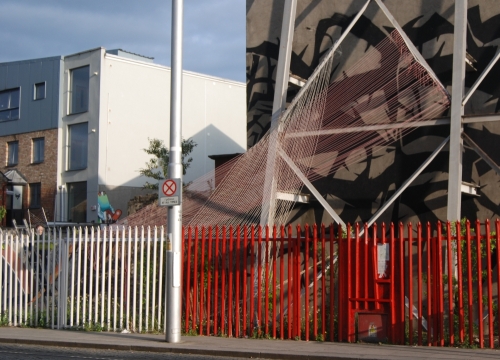




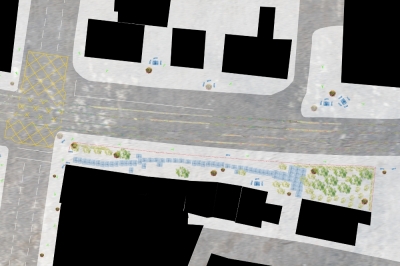
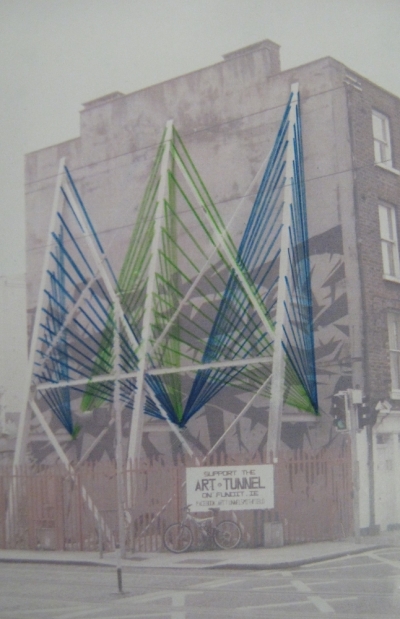



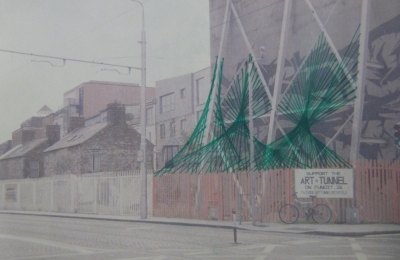
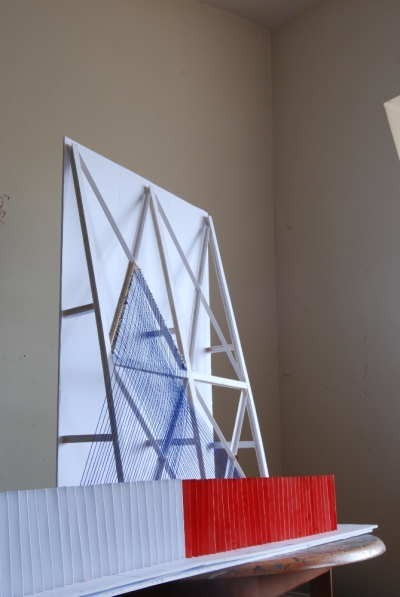




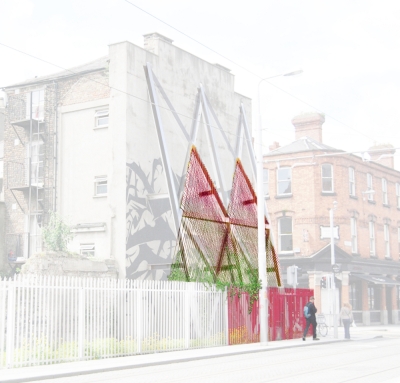

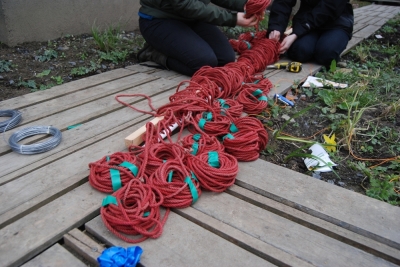



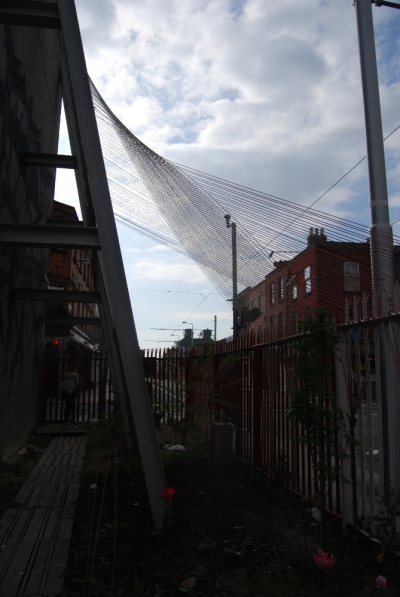

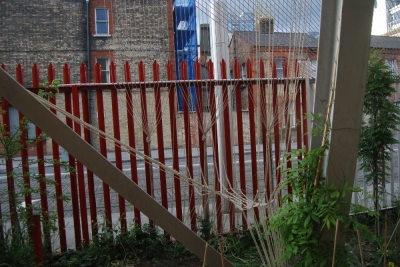
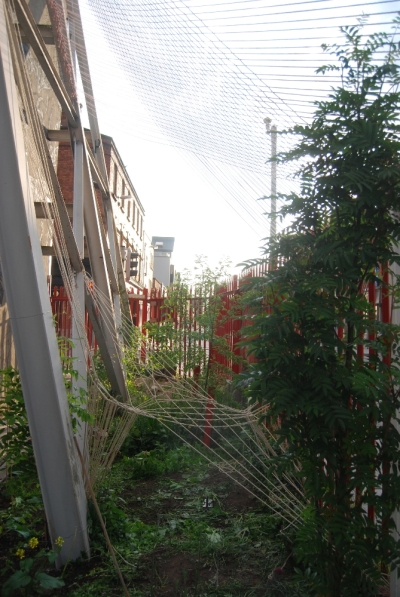
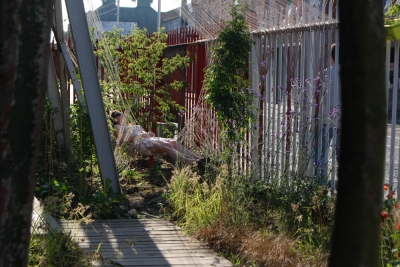

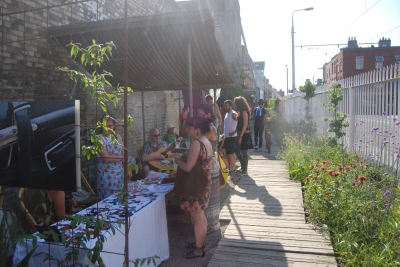
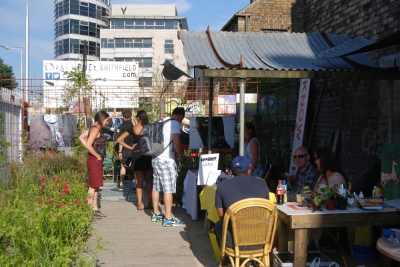
Leave a comment
Comments feed for this article